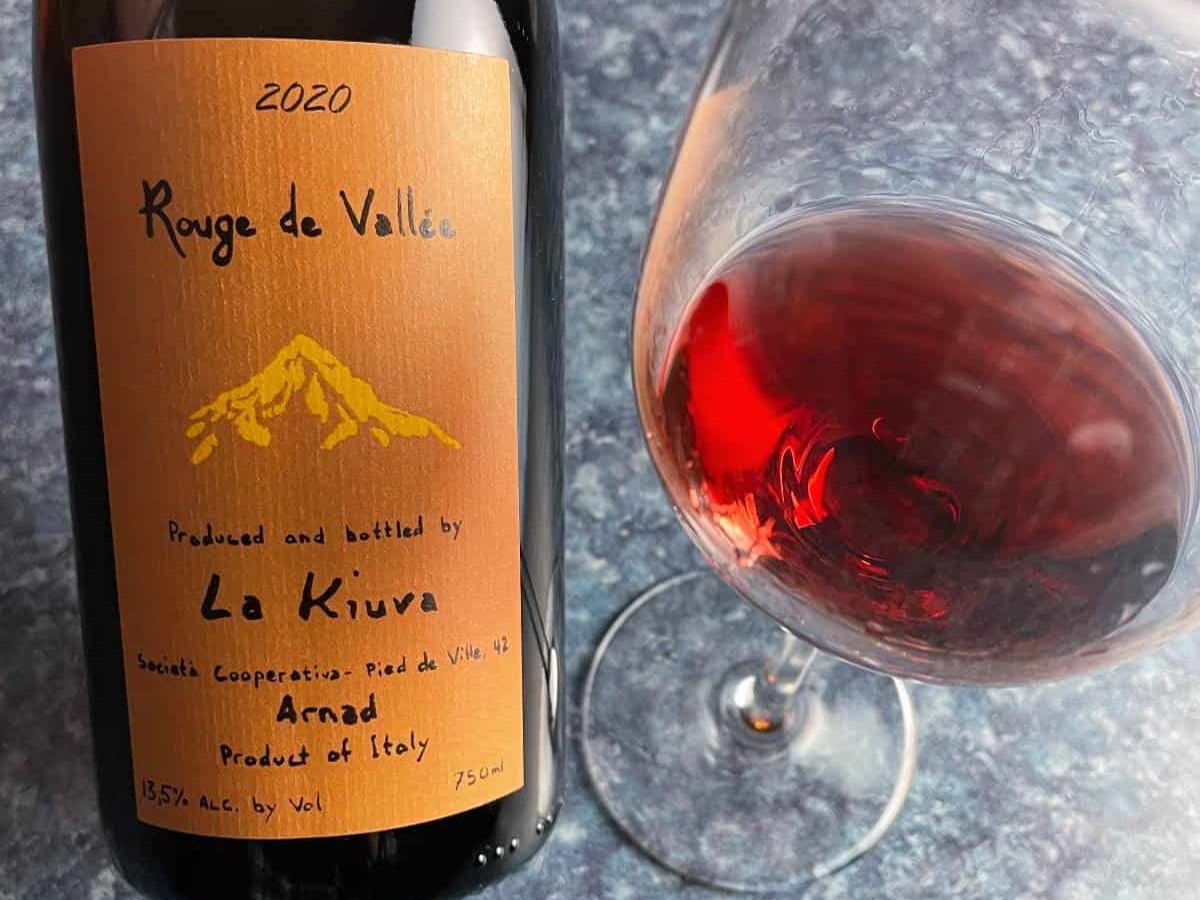
 Jennifer Gentile Martin
Jennifer Gentile Martin
Italian wine: Valle d’Aosta Co-op La Kiuva Rouge de Vallèe
- WTI Magazine #170 Dec 18, 2023
-

 Jennifer Gentile Martin
Jennifer Gentile Martin
The Valle d’Aosta wine region of Italy tucked in the northwestern corner bordering France to the west and Switzerland to the north is truly one of Italy’s hidden gems. I explored this region on my honeymoon and was glad we went out of the way to venture there.
I was thrilled to find a bottle of Valle d’Aosta wine the end of last year at a wine shop since you don’t see these wines too often. Plus, I’m always so intrigued by new grapes and many of these we’ve all probably never heard of before. Today I explore the winery, La Kiuva, and one of their red blends.
La Kiuva, pronounced La “key-oo-vah", is a cooperative that was founded in 1975 that consists of about 50-60 growers. Their name, Kiuva, comes from a local dialect for “sheaf of leaves”. These leaves were gathered to feed the local livestack in the fall. Between the growers, La Kiuva occupies about 60 acres of vineyards in the Pied de Ville, which is a small hamlet within the town of Arnad. This is where the coop was born. Here the plains meet the surrounding mountains looming all around.
The coop produced their first vintage in 1979 and today produces about 8,000 cases with most of the growers farming organically.
The Valle d’Aosta has a central valley that spans over almost 50 miles with individual valleys that break off the central valley. It’s a very mountainous territory and consists of four of Europe’s top mountain peaks, Monte Rosa, Mont Blanc, Gran Paradiso and Matterhorn. We took a funicular up one of the mountains and climbed additional steps to get even higher. I had never personally experienced the difficulty in breathing at such altitudes, but once we got to the top the views of Mont Blanc brought tears to my eyes. What beauty! Everyone should experience this region.
I purchased the 2020 La Kiuva Rouge de Vallée, which is a blend of 70% Picotendro and 30% a blend of the grapes Gros Vien, Neyret, Cornalin and Fumin. Have you heard of any of those grapes before? Picotendro is actually the name for Nebbiolo in this area. It comes from the French word Picot Tendre. Here you see the influence of the French language that is heavily used along with Italian in this region.
As Nebbiolo usually is lightly colored, this wine was a transparent light garnet color. There were aromas of red dried fruits. I was surprised to experience the characteristics of this Nebbiolo, but it makes considering the alpine climate. It was a light-bodied wine with bright cherry notes. It was very approachable with rather low tannin for a Nebbiolo. For those that like to drink reds in the warm months I think this wine would be a great choice.